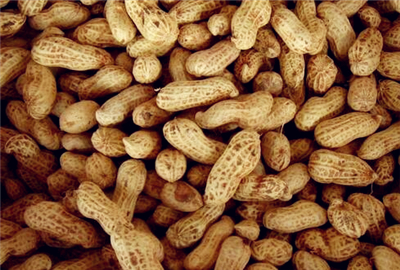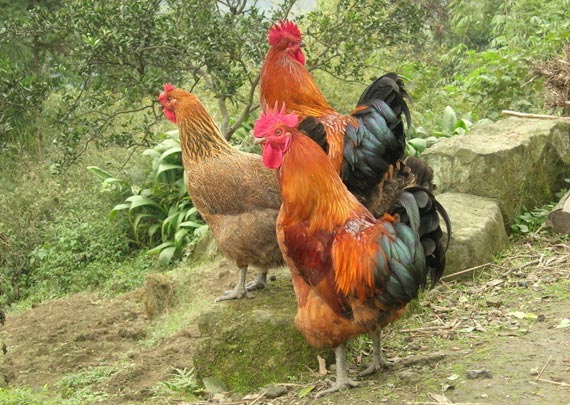2017 Future wheat price trend forecast: wheat prices may rise sharply next year
At present, under the background of the economy stepping into a "new normal" and loose supply and demand, China's wheat processing industry has been impacted by international wheat prices, and the possibility of policy support prices has been further reduced. The domestic wheat market is in the doldrums. Grain is really not easy to grow. How much is the wheat collected this year? What about the price of wheat in 2017?

The Future trend of Wheat prices in 2017 experts predict that wheat prices will rise sharply next year.
This year, the wheat market was weak at the start of the scale, and it lasted until late June for the first time in many years. It was not until July that the activity of buying and selling in the wheat market began to improve. Many employees said that wheat, as a food crop, is obviously affected by state regulation and control, so the purchase strength of the state treasury has a direct impact on the purchase and sale of the market. This year, most of the major wheat producing areas in the south of the Yangtze River have been affected by weather disasters, and the quality of wheat is relatively poor. Even if the national reserve has appropriately relaxed the storage standards, the quality of wheat in some local areas has seriously exceeded the standard and is difficult to enter the warehouse. It has to be reduced to feed wheat, and the price remains low all the time. Although the main wheat producing areas north of the Yangtze River have also been affected to a certain extent by the adverse weather, the quality of wheat is worse than that in previous years, but the quality of wheat in only a few areas, Shandong and northern Hebei is still very good. Grain depots and flour mills around the country have grabbed grain on a small scale. This is the main reason why wheat prices in Anhui, Jiangsu and Henan have remained low recently, while wheat prices in Shandong and Hebei have risen significantly. Now that everyone knows about the recent wheat market, whether wheat should be retained or not has become the main concern of grain hoarders in the market. The author believes that the short-term wheat purchase and marketing strategy is mainly storage, moderate storage of good grain, but no secondary grain.
First of all, the State Reserve has recently made efforts to purchase wheat, and actively delivering grain to the warehouse is the best choice. Since July, the implementation of the acquisition of the state supporting the market has been significantly intensified.
It is understood that at present, the lowest purchase price warehouse points launched by the six major wheat producing provinces have reached 3100, with an available empty warehouse capacity of 36.27 million tons. Although the current progress of wheat acquisition is slower than that of previous years, the progress of wheat acquisition has accelerated significantly since late June. As of July 10, China Grain Reserve has purchased 9.02 million tons of wheat at the lowest purchase price in six provinces. During the five-day period from July 6 to 10, 2.07 million tons of wheat were purchased, an increase of 610000 tons over the previous five days. It can be seen that the acquisition efforts of the State Reserve have begun to strengthen, which is actually a good time to withdraw the funds. As the old saying goes, "when you get the money, you will own it." If the hoarding of grain is stubbornly waiting to rise, the loan pressure, storage pressure and some force majeure factors will reduce the profits of the hoarders, so when the State Reserve has recently made efforts to buy wheat, actively delivering grain to the warehouse is the best choice.
Secondly, there is a lack of purchasing bodies in the future market, and wheat prices may rise sharply next year. From the perspective of the survival environment of milling enterprises in the past two years, this year's flour industry is still in the adjustment period of the industry, and the market is still shrinking. If the acquisition efforts of the State Reserve are weakened in the future, or the acquisition ends, the domestic wheat market will lack a strong demand body, and it will be very difficult for prices to rise sharply.
In addition, the overall supply and demand situation of China's wheat market is loose, although the wheat quality in some areas has been affected to a certain extent this year, the probability of large fluctuations in the market is still very small. On the one hand, the national temporary storage wheat inventory is abundant, the market supply is secure; on the other hand, the demand is not prosperous, the market consumption is difficult to increase significantly. It is estimated that under the guidance of national policy, the trend of the wheat market with "stability" as the mainstream will not change. Therefore, the author believes that the recent market is a good time to ship, if you want to hoard good grain, do not expect short-term profits, we should consider profit points and prepare for all kinds of loss reduction.
Finally, the price of good grain is bound to rise in the future, and it is also a fact that there is no bulk demand for secondary grain. From the feedback from various places this year, we can see that the supply of high-quality wheat market this year is obviously insufficient, so the price of good grain must have room to rise in the future. However, the author believes that the State Reserve has not participated in the auction and rotation of wheat in 2015, and it is bound to supply a large number of markets in the later stage, and its quality is very good. Therefore, although the price of good grain in the new season wheat will rise, but the range will not be particularly large, it is expected that between 1.25 and 1.27 yuan / jin will be blocked by the auction price of the State Reserve, so it is difficult to continue to rise sharply.
So even if the price of good grain is bullish, it needs to be treated rationally. Although the price of secondary grain is not high recently, the author still does not recommend to keep it. We can use a variety of methods to select some of the wheat into the warehouse, and sell the rest at a low price. Because there are many impurities in the secondary grain itself, it is difficult to preserve for a long time, and in addition, the overall price of feed raw materials is more likely to weaken in the later period, so the amount of feed wheat will also be reduced, and the price of secondary wheat will be difficult to rise or even decline in the future. therefore, the author does not recommend that traders continue to hoard wheat of poor quality. Overall, this year's domestic wheat market polarization is an inevitable phenomenon, "high quality, high price, low price" will be the mainstream trend of the wheat market in the future. As the new wheat enters the post-ripening period, it is inevitable that the price of new wheat will be in line with the price of old wheat in the later stage. As the price of old wheat is difficult to fall, driven by the integration of new and old wheat prices, the price of new wheat will maintain a stable upward market pattern, but it is also limited to high-quality wheat rather than inferior wheat. Therefore, traders with poor wheat quality should be disposed of as soon as possible, and later they can pay attention to corn, soybeans and other varieties that have entered the peak production season.
How to grow wheat in 2017
China's wheat production has had a bumper harvest for 12 years in a row, with an annual increase of more than 2.5 million tons in the past five years. However, even with a bumper harvest, we still have to import 3.3 million tons of wheat every year. Importing wheat, on the one hand, is due to our long-standing problem of upside down grain prices. For some enterprises, importing wheat is cheaper than buying wheat from local sources. On the other hand, our high-quality special wheat is still in short supply.
- Prev

Peanut price forecast in 2017: will prices rise next year?
Peanut price forecast in 2017: will prices rise next year?
- Next

Does raising native chickens make money? Why can't local chickens be sold in many places?
Does raising native chickens make money? Why can't local chickens be sold in many places?
Related
- A course of planting techniques and methods on how to grow carrots
- How to plant the latest tulips?
- Is it better to pick tea in the morning or in the afternoon? When is the best time for tea to be picked? what is the third or fifth tea?
- Launch Yuanxiao Happy combination Haocha + Tea Yuan healthy Taste
- Penghu Tourism "Fireworks 20 Parade with You"
- 2022 West Lake Happiness holds "Digital Revitalization Voucher" and draws iphone13 and laptop.
- Banqiao Fuzhou social houses are designed to change start-up combined with police elimination to create a safe and livable environment
- The convenient measure of "mechanical weeding" in Xinbei has been abused and the Agriculture Bureau has imposed heavy penalties on the illegal land consolidation.
- Changgeng University Joins Hands with Four Memory Factories to Rescue Memory Talent Shortage
- The list of Taiwan's top 100 MVP managers is listed by the Director-General of the Farmers' Association of Sanxia District.

